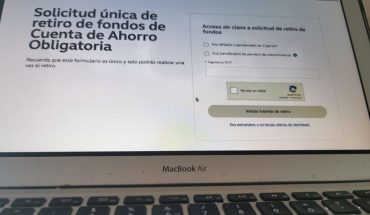SACABA, Bolivia (AP) — Bolivia’s political crisis became lethal on Friday after security forces opened fire on Evo Morales fans in a city in the center of the country. The incident killed at least five and dozens of injuries and threatened the interim government’s efforts to restore stability following the former president’s resignation over an election dispute. Most of the deceased and wounded in Sacaba, near the city of Cochabamba, were shot, Guadalberto Lara, director of the local Mexico Hospital, told The Associated Press about what he described as the worst violence he saw in his 30-year career.
Angry protesters and relatives of the victims gathered at the scene of the shootings chanting “Civil War, Now!” Morales, who received political asylum in Mexico after his resignation on Sunday, called what happened on Twitter a “massacre” and referred to Bolivia’s interim government, led by President Jeanine Añez, as a dictatorship.” Now they murder our brothers in Sacaba, Cochabamba,” he wrote in another tweet. According to the protesters, police fired when demonstrators, including many cocaleros who backed the country’s first indigenous president, attempted to cross a military checkpoint. Emeterio Colque Sánchez, a 23-year-old university student, said he saw the bodies of several protesters and about two dozen people who were transferred to hospitals, many of them covered in blood. Earlier in the day, Añez said Morales could face charges of voter fraud if he returns from Mexico City, though the overthrown leader maintains that he remains the president because the legislature has not yet approved his resignation. The interim leader further noted that the former staff will not be able to participate in the new presidential elections seeking to resolve the political confrontation in the Andean nation. Morales resigned on Sunday following protests across the country over the alleged election rigging of the October 20 election in which he claimed he won re-election for a fourth term. An audit of the Organization of American States found widespread irregularities in the elections. The former president denies fraud. The families of Sacaba’s victims watched them at a vigil on Friday night. A weeping woman put her hand on a wooden coffin surrounded by flowers as she asked, “Is this democracy? So killing like it’s anything.” Another wept and prayed in Quechua over the coffin of Omar Calle, which was covered with the Bolivian national flag and the “wiphala”, which represents the indigenous peoples.
A follower of Bolivia’s former president, Evo Morales, holds the wiphala flag representing indigenous peoples, before soldiers who block a street in the center of La Paz, Bolivia, on November 15, 2019. (AP Photo/Natacha Pisarenko)
The Ombudsman’s Office regretted the deaths in the joint operation between the police and the army and called on the interim government to investigate whether the security forces acted within the limits of the constitution and international protocols on respect for human rights. The department expressed “its alarm and concern at this result in the intention of stopping the entry of a cocal mobilization to the city of Cochabamba”, according to a statement. The acting minister of the presidency, Xerxes Justinian, told reporters in La Paz that five people died and estimated that 22 others were injured. Lara, the hospital’s director, raised the number of injured to 75 people. Justinian called for dialogue between all parties involved in the conflict and noted that preliminary investigations pointed to the use of “military weapons.” In an interview with the AP in Mexico on Thursday, Morales said that although he filed his resignation, Congress never accepted it, so he can say that “I’m still president.” Morales noted that he left office because of the pressure of the army _ the head of the armed forces had “suggested” his departure _ and for threats of violence against his collaborators. Añez rejected his argument.” No one kicked him out, (Morales) left alone,” he said at a news conference. “He can come back, but he has to answer to justice for voter fraud.” Morales supporters, who served as president Bolivia for nearly 14 years and was the last survivor of the “pink tide” of leftist leaders who came to power in South America, protest from their fall from disgrace and set up barricades that caused school closures and fuel shortages in the capital. In La Paz, anti-riot agents fired tear gas at stone-throwing protesters. The children and the elderly who were trapped in the midst of the riots tried to take refuge in businesses that had already come down closed the metal shutters to protect themselves from the rants. Large lines formed at some gas stations after blockades in the nearby city of El Alto, a major fuel distribution center. Añez, who was the highest-ranking opposition senator in the upper house, proclaimed herself president, claiming that everyone who was in the line of succession before her — all supporters of the former leader _ resigned. In a statement, the Constitutional Court backed its claim that it does not need to be ratified by Congress, controlled by the Morales Movement to Socialism.Part of the opposition to Morales was born from his refusal to accept the result that a referendum that would have prohibited him from running for re-election. Morales changed the politics of this decades-governed country by descendants of more clear-complexion Europeans by reversing deep inequality. The economy grew strongly thanks to rising commodity prices. In addition, it enacted a new Constitution that created a Congress with seats reserved for indigenous minorities and allowing self-government of native communities. But many were disenchanted by their insistence on clinging to power



![translated from Spanish: [VIDEO] Evo bets on former Economy Minister Luis Arce as presidential candidate translated from Spanish: [VIDEO] Evo bets on former Economy Minister Luis Arce as presidential candidate](https://ananoticias.com/wp-content/uploads/2020/01/translated-from-Spanish-VIDEO-Evo-bets-on-former-Economy-Minister-370x215.jpg)

